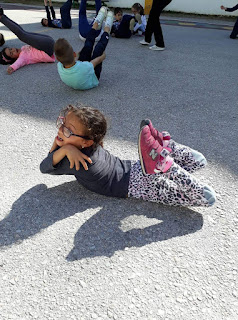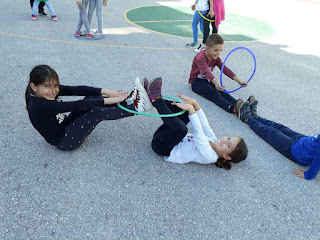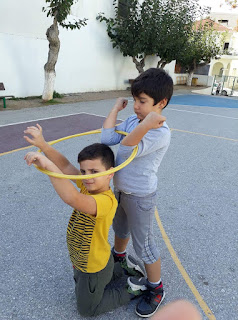The doll, by
its nature, is an object that confuses the boundaries of reality and
imagination, as it is an object of art with high symbolism and autonomous
existence (Cohen, 2007).
“…is the
representation of a living being, more or less true. It varies in proportions,
is able to make predetermined movements and can give birth to all kinds of
emotions, mental states and attitudes. In summary, she has dramatic skills and
is animated, either openly or secretly, in any way invented by her handler” (Manier,
1953).
The children of 5th grade worked together, both for the
construction and for the animation of the giantdoll. All of them have benefited
greatly from it as a pedagogical and expressive medium, as they have overcome
fears and expressed their needs through the doll that personalizes their dreams
and concerns and expresses their deeper feelings.
They printed on the doll words such
as: Stress, Optimism, Memories, Selfconfidence, Dissatisfaction,
Unhappiness, Surprise, Hope, Trust, Success, Happiness, Courage, Anger,
Kindness, Cry, Sadness, Repentance, Hatred, Loneliness, Bitterness, Faith,
Pain, Emotion, Forgiveness, Patience, Joy.
We thank the Technical University of Crete for allowing us to
disseminate the project on the day of Science and Technology on 10/11/2018. (5th grade)

































































